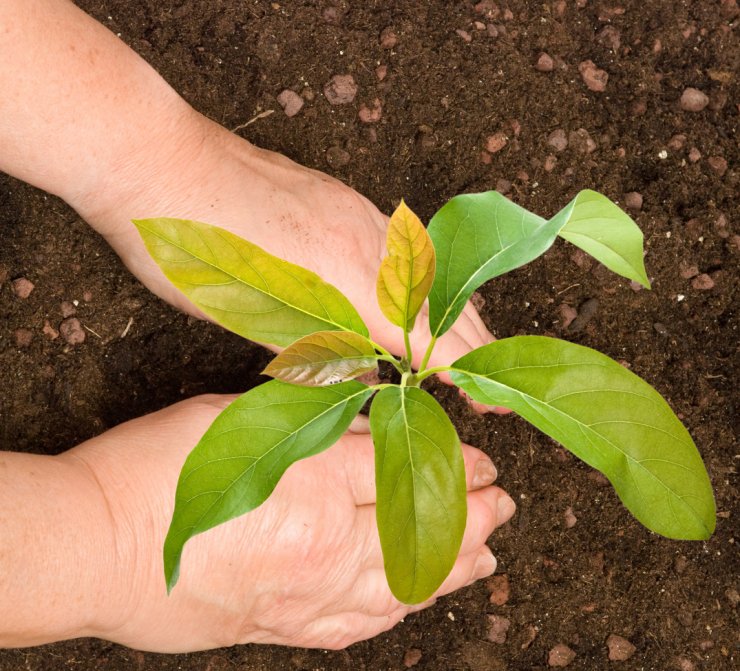
Planting an avocado tree.
Plant avocado trees from March through June. If you plant too late, you risk sun damage because avocado trees don’t absorb water very well when they’re still immature. Also, planting in spring gives your new tree plenty of time to establish itself before cooler temperatures arrive.
Your tree’s root system is very sensitive, so be careful during the planting process not to damage or disrupt it.
Dig a hole three to four times the diameter of the container your seedling is in, and three times as deep. Remove any grass as mentioned above, out to a 10-foot diameter around the planting hole.
Avocados have shallow roots, so don’t plant too deep! The feeder roots will grow in the top 6 inches of soil (which is why it should be well-aerated). To plant, backfill the hole you just dug to the point where the tree’s roots will be at or slightly higher than the level your seedling grew at in the pot.
To do this, backfill the hole you just dug with the newly-aerated soil. Note: Do not add compost, topsoil, or fertilizer! The idea is to encourage your tree to adapt to the native soil it’s in.
Remember, be careful with your seedling and protect those roots when you place your tree in the remaining hole. Be gentle if you have to remove soil from a rootbound tree. Fill in around the roots with remaining soil, tamping gently as you go.
Add a thick layer of coarse mulch (such as redwood bark, cocoa bean husks, or shredded tree bark) at a rate of about 1/3 cubic yard per tree. Keep the mulch 6 to 8 inches away from the tree trunk. Water your tree deeply as soon as you’re done planting.
Have you followed these steps in planting an avocado tree? Please share any tips with us in the comments.


 Previous
Previous

